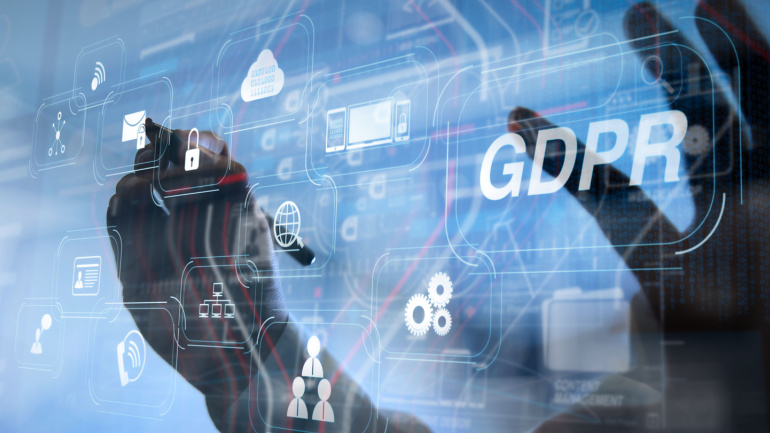Strengthening its lead in the telecommunications sphere, the UK Space Agency has recently allocated £20 million to further drone-based technologies and aerial connectivity initiatives. This exciting endorsement could dramatically shape the future of many sectors, from emergency services to healthcare, illuminating the transformative potential of drone-borne support systems. How will this funding amplify the UK’s fast-growing satellite communications industry and revolutionise our everyday lives? Dig deeper to find out!
Witness an intriguing experiment as three major European telecom leaders dive headfirst into field-testing the European Union’s digital ID scheme, dubbed ‘Potential’. An initiative that aims to streamline identity verification across 19 EU nations, it brings to our digital life convenience, efficiency, and the promise of enhanced security. However, it’s not without its challenges -potential data leaks, risks of stringent gatekeeping and concerns over invasive surveillance.
Emerging as a benchmark for sustainability, Vodafone negotiates a massive 410 Gwh photo-voltaic energy deal yearly with renewable firm Iberdrola, aiming at operations in Germany, Portugal, and Spain. This agreement, an expansion on their existing partnership, likely opens doors to further renewable initiatives. Vodafone’s commitment towards an eco-friendlier future radiates, from charging points for electric vehicles at their primary facilities in Spain to ensuring customers’ benefits from 100% renewable purchased electricity.
A fresh structure designed to secure EU data housed in the US has been implemented, but disputes persist surrounding the safety of EU data during transatlantic transfers. While the EU sees the potential of unwarranted surveillance by US security forces, the US finds it challenging to alleviate these suspicions. Despite concerns raised by privacy activists, notable tech powerhouses like Facebook are in favor of this framework, thinking it’ll protect essential goods and services. This leaves a potent question around the future of data protection lingering in the air.
Ningbo, a vibrant economic hub in China, is transforming into a smart manufacturing center, committing itself to superior digital infrastructure. The heart of this strategy encompasses a six-layered approach focused on efficient information transmission that fosters industry digitization. With established leadership in 5G industrial internet, and over 600 private networks already deployed, the city provides a gateway to the digital future. Innovation extends beyond large corporations, with solutions ranging from on-premise to lightweight 5G private networks, thus catering to businesses of all sizes. The impact is far-reaching and the future, promising, as China Mobile Ningbo aims to address industry-specific challenges with targeted 5G solutions.
Despite the complexities, the Telecoms.com survey reveals an exciting consensus: The enterprise private networks may become a 5G goldmine in the next few years. Interestingly, the mobile edge’s role shows signs of decrease. But what about Multi-Access Edge Computing and the high cost of managing mixed networks? And how can vendor selection help overcome security concerns? With both telecoms and customers keen on leveraging 5G’s potential, it’s a thrilling tale of advancement and challenges.
Four prominent Swedish companies are under the scanner for illicit data transfer to the U.S., marking a stark violation of EU’s GDPR rulings. The heart of this issue lies in their use of Google Analytics, leading to these privacy breaches. Interestingly, not all implicated parties bore the same guilt, showing varying levels of data safety vigilance. More caution and respect for GPDR’s regulations is thus urged from all companies dealing with data transfers. Undeniably, an increasing global scrutiny on data protection laws, demands such vigilance.
Cisco’s Webex, a leading unified communications and collaboration platform, has become the first of its kind to achieve adherence to the EU Cloud Code of Conduct (EU Cloud CoC) Level 3. This significant milestone was reached after undergoing an independent third-party assessment and audit, which verified the platform’s compliance with all code controls.
Microsoft and Salesforce have emerged as leaders in the low-code space for their integration of generative AI, according to a report by GlobalData, a prominent data and analytics company. The digital transformation era has fueled the demand for rapid app development and intelligent automation, prompting innovative enterprises to explore the potential of emerging technologies. The “Low-Code Platforms: Competitive Landscape Assessment” report by GlobalData highlights the fiercely competitive nature of the low-code market segment. Microsoft has strengthened its position by combining its Power Automate offering with the new Azure OpenAI service. On the other hand, Salesforce has been consolidating its Salesforce Flow/Automation and Einstein tools, including Einstein GPT CRM tools, within its Data Cloud platform. Charlotte Dunlap, Research Director at GlobalData, acknowledges the rapid entry of global public cloud platform providers such as Google, Microsoft, and Amazon into the low-code market. These companies are launching strategies centered around visualization tools, automation…
LogRhythm, the company helping security teams stop breaches by turning disconnected data and signals into trustworthy insights, has partnered with The Health Informatics Service (THIS), an innovative, collaborative NHS organization providing digital and IT services, to transform healthcare security in the UK with LogRhythm Axon. The partnership enables THIS to serve one of its key customers within the Bradford District and Craven Place with a 100% cloud-native security operations platform. THIS gains a flexible security solution that minimizes expenses and provides a simple platform design for security teams to identify threats. Axon’s increasing adoption in Europe is strengthening enterprise’s hybrid IT security postures within the region and enhancing the analyst experience with complete visibility into network threats. “The threat landscape in Europe is currently experiencing rapid growth, with more organizations featuring in headlines after falling victim to sophisticated attacks. Amongst these organizations, the healthcare industry is one of the biggest…













